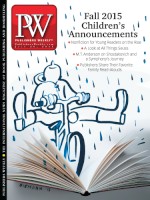In 2009, when Stanford University decided to close its publishing course, a group of its faculty approached Tina Weiner, then publishing director at Yale University Press, to see if she might have any interest in moving the program to New Haven, Conn., and heading it. “The timing was perfect,” Weiner recalled. “I was interested in doing something different and loved the idea of stepping back and studying the industry as a whole.”
For Weiner, the role, though new, kept her within an institution where she had spent her publishing career. After working at the National Museum of Art in Washington, D.C., Weiner moved to New Haven with her husband when he took a new job. “Realizing that without a Ph.D. I wasn’t going to go far in the art world, I decided to try something new and looked for opportunities at Yale,” Weiner said. Always a big reader, she was attracted to an opening in the sales department at Yale University Press. She joined the publisher in 1971 and felt, at the time, that she had found “not just a job but a career.”
Weiner rose through the ranks at the press, becoming promotion manager, marketing director, and then the first female assistant director in the history of the press in 1985 (she was also told she was the first woman at the publishing house to wear pants to work). In 1998, she was named director, a role she served in until departing to become director of the publishing course in 2010.
During her tenure, the press expanded its scholarly list while taking on a stronger trade presence. “It was thrilling to be a part of the remarkable growth of the press. Because my responsibilities continued to expand in all areas, I was never bored and always challenged,” she said.
Weiner led the publisher at a time of significant change not only for university presses but for the industry as a whole. “For years, things changed gradually and then at an accelerated pace as Yale, and other university presses, became more trade oriented at the same time as staying on mission as academic publishers,” Weiner said. “Selling to independent bookstores as well as the chains, and then through Amazon, expanded our audience, and we backed that up with increasingly more sophisticated marketing and publicity.... The biggest change now, of course, is the transition to digital and the increasing challenge of discoverability amid so much competition for eyeballs.”
In her new endeavor, Weiner sought to create a curriculum that combined teaching leadership and management strategies with in-depth discussions and analysis of the most pressing issues facing publishers. The course, which took place this year July 12–24, is geared to mid- and senior-level professionals. “The first year, I was heavily indebted to the faculty from the Stanford program in both the format and curriculum, but since then [I] have changed the program quite substantially,” Weiner said. In the ensuing years, she divided the book and magazine media sessions into separate weeks and honed the program’s international focus.
After a full career in traditional publishing, Weiner said that teaching publishing has, in turn, taught her a great deal about an industry she has worked in for more than 40 years. “The amount of innovation going on around the world is astounding, and the number of creative people in publishing is astonishing,” she said. “Although the ever-present disruption is of concern, new ways of dealing with change are continually appearing, and innovation is in the air.”



 Volume 262
Issue 29
07/20/2015
Volume 262
Issue 29
07/20/2015





